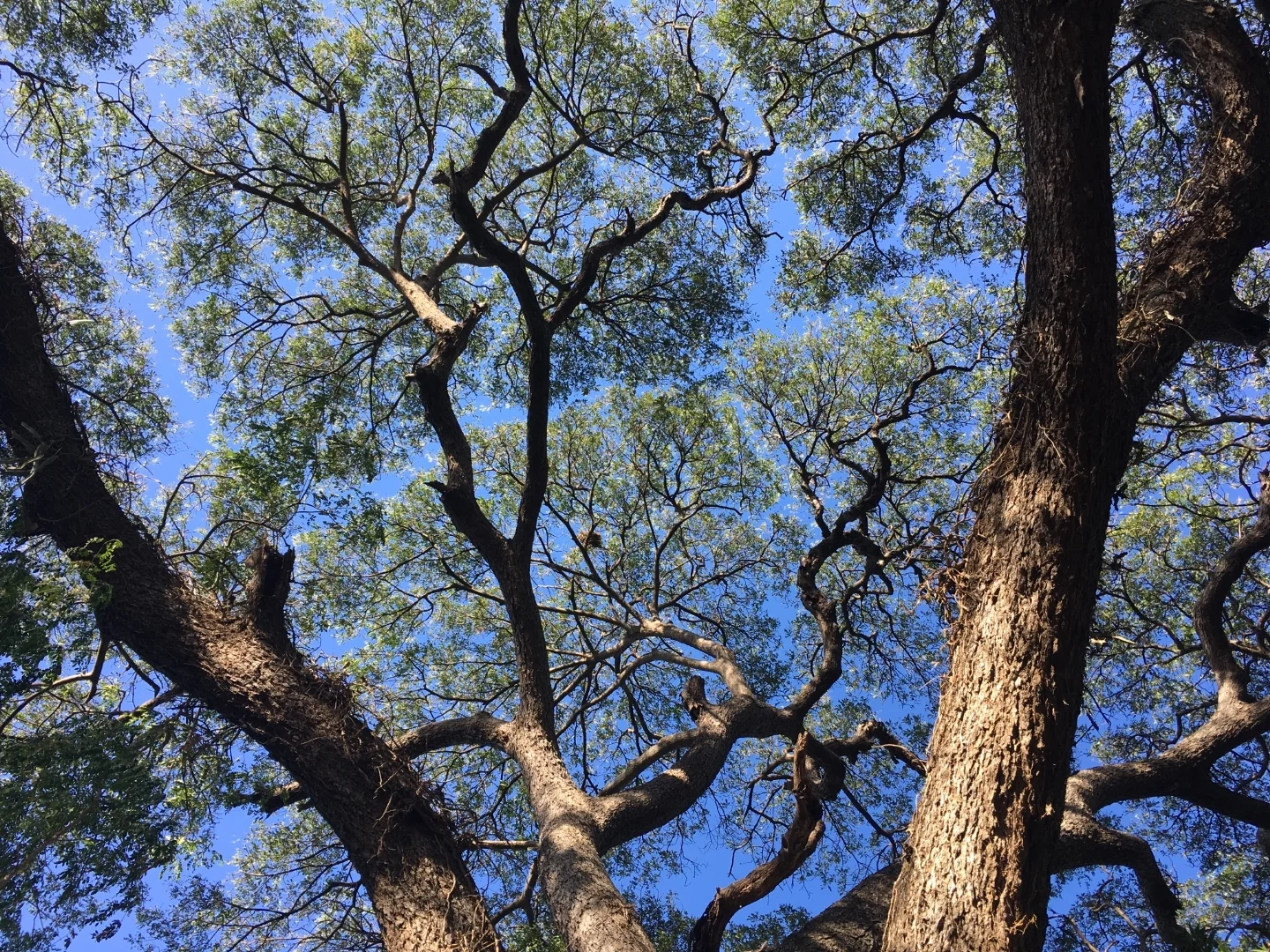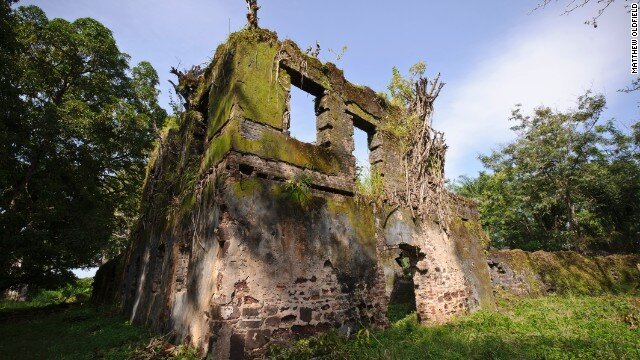A Virtual Journey Through the History of the Sierra Leonean Slave Trade and its Connection to the Gullah Geechee (Part 1 of 2)
/by Katie Brickwood
This March I joined Learn from Travel’s virtual study abroad programs for Agnes Scott College as a substitute virtual guide coordinator. I got the chance to audit two of the seven fascinating programs organized by Learn from Travel: “Marronage, Freedom and Resistance in the African Diaspora” based in Sierra Leone and “Marine Ecosystems'' based in Florida and Belize. In this two-part blog series, I share my experience attending virtual study abroad programs from the perspective of a student.
Virtual Study Abroad in Sierra Leone at a Glance:
Day 1: Virtual study tour of Bunce Island, Sierra Leone
Day 2: Learning about the Gullah-Geechee connection to Sierra Leone
Day 3: Sewing sweetgrass baskets and dancing with The Freetown Players!
Day 4: Maroon history and zoom with female leaders in Sierra Leone
Day 1: Virtual study tour of Bunce Island, Sierra Leone
Monday, 8 March 2021
Wrapping up my first day of the Marronage, Freedom and Resistance in the African Diaspora program with Learn From Travel (LFT) and I was not expecting to feel as impacted as I do. I also feel a little tired from the ‘travel’ – is that possible?!
Today I was introduced to the history of the Sierra Leonean slave trade, and the connection with the Gullah-Geechee communities in the Low Country around the North Carolina-Georgia seaboard. The class met with Amadu Massally, a Sierra Leonean community leader now based in the US. He was immediately engaging as he passionately explained the ties between the culture and history of the Gullah-Geechee area and Sierra Leone - the strongest of its kind in all the Americas. Amadu shared with us both interesting and saddening statistics about the inter-Atlantic slave trade, and introduced us to Bunce Island – the “warehouse of humanity” where slaves were held, processed, and dispatched… and where I was about to visit virtually.
Bunce Island Photo by: Matthew oldfield via cnn
Connecting via cell phone with local guide, Ibrahim, on Bunce Island, I walked through the ruins of the slave fortress. It was exciting and eerie to stand in the headquarters from where slave traders would view the men’s slave yard through a small window to make their selections, like choosing cattle.
Not far from the slave castle, our guide met a local man. After chatting briefly, Ibrahim stopped to introduce us and explain that he was hosting a virtual study abroad tour. Responding to a question from a student, the man said there are many ghost stories on the island, and even the surrounding waters are said to be possessed. This comment made me reflect even deeper about the already eerie visit to a place with such a sad history.
Day 2: Learning about the Gullah-Geechee connection to Sierra Leone
Tuesday, 9 March 2021
women in rural sierra leone
We met with Dr. Joseph Opala this morning, who has dedicated his life to researching the historical and diaspora connections between Sierra Leone and the Gullah people. Dr. Opala was full of stories and anecdotes from his time spent collecting oral histories with the Gullah Geechee, conducting archaeological research on Bunce island, and working on thr rice plantations in Sierra Leone. I had no idea of the importance of Sierra Leonean rice on the economy of the Low Country, where rice became one of the most important and profitable local industries during the 1600s, using Sierra Leonean techniques and labor.
Dr. Opala also shared with the class moving stories of Gullah people tracing their roots and coming home to Sierra Leone. A particularly impactful story is that of a woman from Georgia named Mary, who found her origins through a song that was passed down through her family, a song that is only sung in one small Sierra Leonean village.
We then connected with local tourism student, Alusine, on top of Old Yagala – a high plateau area that Sierra Leoneans settled in an effort to resist capture by the slave traders. Whilst batting away gnats in the hot sun, Alusine described what life was like on Old Yagala. Alusine spoke with so much confidence and knowledge about the history and life at Old Yagala that I could really picture it. I imagined walking the steep, difficult trail that the women would walk daily to collect water. I also saw the big rock where chiefs would sit to speak with the people or observe cultural events. Alusine, who lives close to Old Yagala, explained that the name ‘Yagala’ comes from the sound of palms falling from the palm trees… “Yagalagalagala”
Day 3: Sewing sweetgrass baskets and dancing with The Freetown Players!
Wednesday, 10 March 2021
Today I virtually walked the dusty streets of Rogbonko Mataka, a village of about 500 people 3 hours from Freetown, which is one of the few villages in Sierra Leone that still sews traditional sweetgrass baskets. Amadu explained to the class that the skill of basket sewing (it is referred to as sewing, not weaving) is taught orally, and is passed down from generation to generation within the village. It is a skill that made its way to the Low Country via the slave trade. Amadu shared a video of an eighth generation Gullah basket sewer, Nakia, travelling back to Rogbonko to trade tips and techniques with the local basket sewers, undoubtedly of shared ancestry. It was so touching to see these women, who can’t communicate verbally, communicate and connect perfectly through this traditional art.
Baskets in sierra Leone photo by: julie via flicker
Leaving the countryside for the capital city of Freetown, we met with cultural ambassador Charlie Haffner, who told us his story and the importance of history telling through songs and performances. Charlie is an artist who has written songs to tell the oral history of Sierra Leone and the Gullah people, including the importance of rice to the culture as their unbroken connection to home. As Charlie put it, for Sierra Leoneans “if we do not eat rice, we are not eating”. It made me think of the symbolism of the Gullah people in the Low Country feeling ‘empty’ without rice in their bellies, without home in their bellies…
We were then treated to a live performance by The Freetown Players, a national Sierra Leonean dance troupe, whose members were beautifully dressed in colourful traditional clothing. Their song and dance was uplifting and solidified the importance of these mediums in preserving Sierra Leonean culture both locally and in America.
Day 4: Maroon history and zoom with female leaders in Sierra Leone
Thursday, 11 March 2021
Today, my last day virtually touring Sierra Leone, the class visited St. John’s Maroon Church in Freetown to learn about Maroon history with our virtual guide Mohamad and church leader Victor. They told us the story of the 500 Jamaican Maroons who escaped slavery and came to settle Sierra Leone in the 1700’s. The limestone church that we toured was built by the Maroons in 1808, and today is a heritage building. I saw the original wood from the boat that the Maroons arrived on in the rafting and pulpit, and the original bell from the ship which sounds strong to this day!
To finish what has been a truly eye-opening program, I was treated to a conversation with Isata Kabia, the Sierra Leonean Cabinet Minister of Social Welfare to discuss the role of women in leadership. Isata shared with the group the journey she has taken to arrive in her current role, touching on the various barriers she has had to overcome, as well as the ‘conformity trap’ in politics that she has had to break through in order to be able to propose new ideas and do things differently. I was then introduced to a group of young female activists from the University of Makeni. They shared their passion and experiences as young female leaders in their country, highlighting the importance of support networks, mentors and teamwork, reinforcing the notion that at the end of the day we can achieve more together. They made me realise that being a leader doesn’t always mean being in a ‘big leadership’ role. Leadership that is out of the spotlight is equally important and a great place to start with activism. These women truly inspired me.
A Conversation with Hon. Isata Kabia















